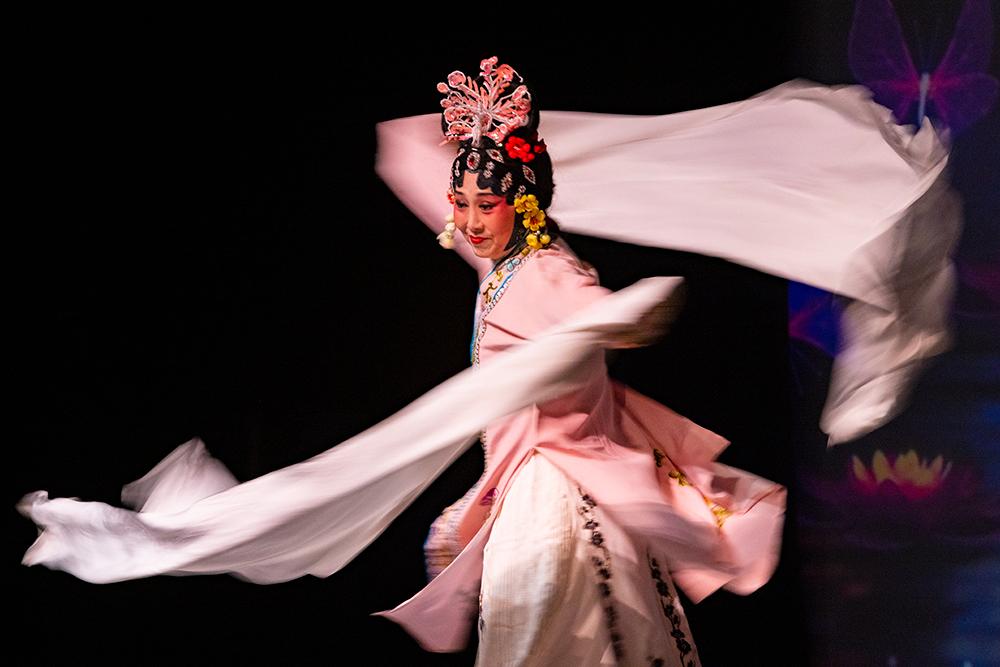East and West: TRIP students help create bilingual e-journal in theater arts

Theater arts scholars and artists from East and West have a lot to offer each other — if you can bridge the linguistic divide.
A new electronic journal, TheaComm: an E-Journal of Theater Arts Communication, aims to do just that. The bilingual publication in English and Chinese is published online by the Center for Theater Arts Collaboration (CTAC), established in December 2021 as a joint effort between Binghamton University and the National Academy of Chinese Theatre Arts in Beijing. The only center of its kind in the world, CTAC works with scholars and artists in the U.S., China and across the world, advancing theatrical exchange, communication and collaboration through teaching, performance and research.
TheaComm, which will release its first issue this spring, features scholarly articles, news and opinions related to Chinese and Western theater arts. That project is also a collaboration, this time between CTAC and Binghamton’s Translation Research and Instruction Program (TRIP).
“This is an adventure, in a sense. China has a lot of great actors, directors and theater people, but they don’t speak English very well because it’s the nature of the field,” explained Associate Professor of Asian and Asian American Studies Chenqing Song, the director of TRIP. “It comes from Chinese opera, and foreign-language training wasn’t traditionally a part of that.”
Six TRIP doctoral students and two master’s students, all native Chinese speakers, translated articles for the inaugural issue. It’s a win-win, said SUNY Distinguished Teaching Professor of Asian and Asian American Studies Zu-yan Chen, CTAC director. Participating students receive an honorarium and MA students also fulfill requirements for their degree program, which mandates a real-world translation project or internship.
“With such a strong team of translators, TheaComm’s language quality is ensured,” Chen said.
Not that it was easy; the translation process took months, including revisions and proofreading.
Scholarly articles are written differently in China and the United States, explained master’s student Xueping Liang-Lee, who translated an article by a University of Chicago professor on two disastrous opera performances during China’s Qing dynasty. Chinese scholars often avoid using first-person pronouns, for example, while American scholars may not.
“When dealing with this cultural difference in translation, I need to find creative ways to transform first-person pronouns into the terms that conform to Chinese convention,” Liang-Lee said.
And there is also specialized terminology to contend with, added master’s student Yunsong Luo, who edited an article by a Shenzhen University professor about 19th-century Chinese export paintings in the British Museum.
“For example, the names of the attire and accessories of Chinese theater mostly have uncommon Chinese characters with special meanings, which are very hard to translate into English,” he explained.” The names of each play of Chinese theater are also hard to translate, since we want to find a fixed translation and not just Romanize its Chinese name by using pinyin (the Romanization system for Standard Mandarin Chinese in China), making it hard for us to choose the right words.”
Luo also helped with typesetting the e-journal, and learned a good deal about how translation journals operate along the way, he said.
“I have learned a lot, especially in translation and project management skills,” Liang-Lee added. “It has always been a challenge for me to translate long compound sentences in English. Through this project, I have developed a better approach to handle them effectively.”
